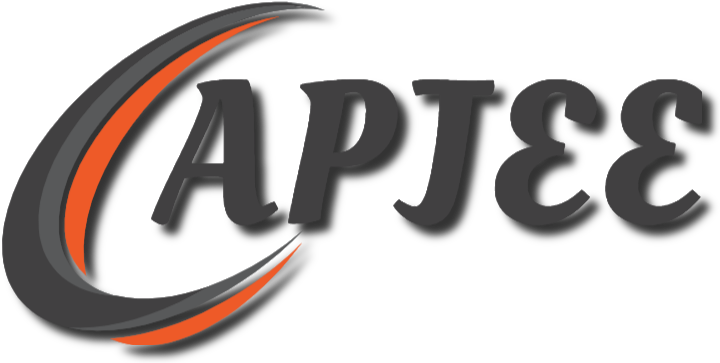Integrated Water Resources Management (IWRM): Maximise Usage and Minimise Wastage of Water Resources
DOI:
https://doi.org/10.18034/apjee.v6i1.260Keywords:
GWP, WSUD, Dredging, Rainwater Harvest, Water Accounting, Awareness Rising, Implementation of IWRMAbstract
Following the implementation of GWP (Global Water Partnership) in 1996 by UN the countries around the world began to implement the principles of IWRM to minimize water waste and maximize its beneficial use. The Ministry of Local Government, Rural Development and Cooperative in Bangladesh also adapted the idea and created IWRM unit in 2003 through WARPO, CEGIC and IWM. Bangladesh is going through serious shortages of fresh water resources. Major reasons are: diversion of natural river flow in the upstream area; rapid siltation on river beds which have seriously reduced water holding capacity causing regular floods destroying crops, making people homeless and even loosing many lives, destroying economic progress; and change of climate pattern, seawater encroachment due to sea level rise destroying fresh water resources and cropping lands due to climate change impact and greenhouse gas emission. To overcome these issues the country must adapt the following steps: implementation of IWRM practices to its maximum capacity. IWRM will include surface water, groundwater, waste water and sewage water resources to design its maximum utilization. In addition WSUD techniques; urgent dredging of rivers; positive negotiation with the neighbors for surface water sharing and storing excess surface water during monsoon at series of reservoirs built in upstream locations and use them during dry season. The biggest task of Bangladesh IWRM is to educate all stake holders; establish proper coordination among all water management sectors and train up end users to transform them as guardian angels of water conservation.
Downloads
References
Ahmed, Reaz (2011). Study sees excessive withdrawal of water as the reason; saline water will make inroads if trend continues. The Daily Star, 25 October, 3011.
Alam, S. M. M. (1991). Step – drawdown tests, Determining well performance and hydraulic parameters. Journal of Water Resources Development. Vol. 7, No. 4, pp 259-266. DOI: https://doi.org/10.1080/07900629108722521
Alam, S. M. M. (2011). Hydrogeochemical evolution of groundwater of part of Ganges-Meghna. Accepted 9 November 2010, published 22 June 2011, Published by the Journal of AQUA mundi, by Scribo, in Italy. Am03029: 071 - 082.
Alam, S. M. M. (2016). Understanding of Ground Water – Surface Water relationship through the analysis of ground water flow system of part of Bengal Delta. Accepted for publication by the “Ideal Journal of Environmental Science and Management” (IJESAM).
Delft hydraulics (2003). Architecture design of the Computational Framework for IWRM planning in Bangladesh: Peter Gijsbers (WL|Delft hydraulics), October 2003
eWater Source — Australia's national hydrological modelling platform - Integrated Water Resources Management (IWRM) combined with water policy and governance capability. (Source: http://ewater.org.au/products/ewater-source).
Flood Management in Bangladesh - CCAFS | CGIAR program - Climate Change, Agriculture and Food Security. (Source: http://www.slideshare.net/cgiarclimate/flood-management-in-bangladesh-pd-cdmpii-upd-28-nov13.
Global Population. (Source: https://www.google.com/search?q=global+population&ie=utf-8&oe=utf-8&client=firefox-b&client=firefox-b-ab#q=global+popul).
Global water partnership strategy 2004–2008. (Source: global water partnership strategy 2004–2008 - IRC-www.ircwash.org/sites/default/files/GWP-2003-Strategy.pdf.
GoB (1998). Bangladesh Water and Flood Management Strategy.
Gupta, Ankur. (2014). Integrated Urban Water Management (IWRM). Global Water Partnership. www.gwp.org. (Source: SustSan workshop: Integrated Urban Water Management by Ankur ...)
Hugh Turral et al (2009). Much Ado about the Murray: the Drama of Restraining Water Use. 1. 28 Newry Street, North Carlton, Melbourne, Australia; 2. The Australian National University. DOI: https://doi.org/10.1079/9781845935382.0263
IWRM Unit, LGED (2003). Analytical framework for the planning of Integrated Water Resources Management (Ministry of Water Resources and Local Government and Cooperatives.
Nyambod, Emmanuel M. and Huq, Nazmul (2010). Integrated Water Resources Management and Poverty Eradication –Policy Analysis of Bangladesh and Cameroon. (source: Journal of Water Resources and Protection. Vol. 2 No. 3, Article ID: 1489, 8 pages DOI:10.4236/jwarp.2010.23021 ). DOI: https://doi.org/10.4236/jwarp.2010.23021
SOS-arsenic.net. (2015). GROUND WATER (Source: http://sos-arsenic.net/english/groundwater/index.html).
The Dublin Statement (1992). on water and sustainable development. www.wmo.int/pages/prog/hwrp/.../icwedece.html. world meteorological organization.
UNDESA (2005-2015). International Decade for Action “ Water For Life (integrated Water Resources Management).
UNEP (2008). Status Report on Integrated Water Resources Management and Water Efficiency Plans. Prepared for the 16th session of the Commission on Sustainable Development. (www.unwater.org/downloads/UNW_Status_Report_IWRM.pdf).
World Population Clock: 7.5 Billion People (2016) - Worldometers www.worldometers.info/world-population/.
Zahid, Anwar and Ahmed, Syed R U. (2004). Groundwater Resources Development in Bangladesh: Contribution to Irrigation for Food Security and Constraints to Sustainability. Ground Water Hydrology Division, Bangladesh Water Development Board, Dhaka, Bangladesh.
-- 0 --
Downloads
Published
Issue
Section
License









